What Is a Transformer in Electricity: The Key to Efficient Power Transmission?
Have you ever wondered how electricity travels safely from power plants to your home? The answer lies in a device you rarely see but heavily rely on: the electrical transformer.
A transformer in electricity is a device that changes the voltage of electrical power. It allows electricity to be transmitted efficiently over long distances and then safely used in our homes and businesses. Transformers are the unsung heroes that make our modern electrical grid possible.
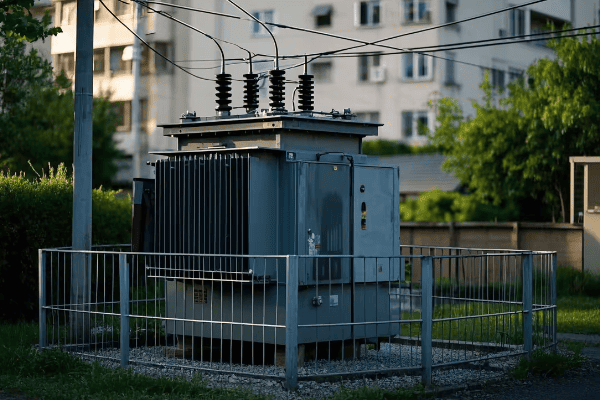
As an electrical engineer with years of experience in the power industry, I’ve seen firsthand how crucial these devices are. Let’s explore the world of electrical transformers and discover why they’re so important for our modern life.
Bridging the Distance: How Transformers Enable Long-Range Power Transmission?
Imagine trying to pour water from a fire hose into a drinking glass. That’s similar to the challenge of getting electricity from power plants to your home. Transformers are the solution to this problem.
Transformers enable long-range power transmission by increasing voltage at power plants and decreasing it near consumers. High voltage means lower current for the same power, which reduces energy losses in transmission lines. This makes it possible to send electricity over vast distances efficiently.

Let’s dive deeper into how transformers make long-range power transmission possible:
Step-Up Transformers at Power Plants
The journey begins at the power plant:
- Generators produce electricity at relatively low voltages (10,000 to 25,000 volts).
- Step-up transformers increase this voltage to 100,000 to 1,000,000 volts.
- This high voltage is crucial for efficient long-distance transmission.
The Benefits of High-Voltage Transmission
High voltage transmission has several advantages:
- Lower current for the same power (Power = Voltage × Current).
- Lower current means less energy lost as heat in transmission lines.
- Smaller conductors can be used, reducing infrastructure costs.
Step-Down Transformers Along the Way
As electricity nears its destination:
- Substations use step-down transformers to reduce voltage.
- This process happens in stages, bringing voltage down to levels suitable for local distribution.
- Finally, transformers on poles or in ground-level boxes reduce voltage to 120/240 volts for home use.
Here’s a simplified view of voltage changes in power transmission:
| Location | Transformer Type | Input Voltage | Output Voltage |
|---|---|---|---|
| Power Plant | Step-Up | 25,000 V | 765,000 V |
| Transmission Substation | Step-Down | 765,000 V | 230,000 V |
| Distribution Substation | Step-Down | 230,000 V | 13,800 V |
| Neighborhood | Step-Down | 13,800 V | 120/240 V |
I once worked on a project to upgrade a long-distance transmission line. We replaced old transformers with more efficient models at both ends of the line. The result was impressive: we could transmit 20% more power over the same distance with lower losses. It was a clear demonstration of how crucial transformers are in bridging the gap between power generation and consumption.
Transformers are the key to making our vast power grids work. They allow us to generate electricity in one place and use it hundreds of miles away. Without them, we’d need power plants in every neighborhood, which would be impractical and inefficient. Thanks to transformers, we can have a centralized, efficient power generation system that serves millions of homes and businesses across wide areas.
The Science of Transformation: Understanding the Core Principles of Electrical Transformers?
Have you ever been amazed by a magician pulling a rabbit out of a hat? Well, transformers perform a similar magic with electricity, and the secret behind their trick is electromagnetic induction.
Electrical transformers work on the principle of electromagnetic induction. When an alternating current flows through one coil (the primary), it creates a changing magnetic field. This field then induces a voltage in another coil (the secondary). The ratio of turns in these coils determines the voltage change.
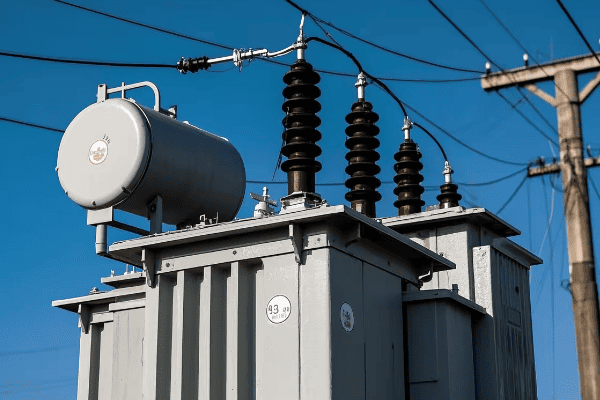
Let’s break down the core principles that make transformers work:
Electromagnetic Induction
This is the key to transformer operation:
- An alternating current in the primary coil creates a changing magnetic field.
- This field is concentrated by the iron core.
- The changing field induces a voltage in the secondary coil.
- The induced voltage depends on the rate of change of the magnetic field.
The Role of the Core
The iron core is crucial for efficient operation:
- It provides a low-reluctance path for the magnetic field.
- This concentrates the field, making the transformer more efficient.
- The core is made of thin laminations to reduce energy losses from eddy currents.
Turns Ratio
The turns ratio determines the voltage change:
- If the secondary has more turns than the primary, voltage increases.
- If it has fewer turns, voltage decreases.
- The voltage ratio equals the turns ratio: Vs/Vp = Ns/Np
Power Conservation
In an ideal transformer:
- Input power equals output power (minus small losses).
- As voltage increases, current decreases proportionally, and vice versa.
- This is why high voltage is used for transmission (lower current, lower losses).
Here’s a simple comparison of transformers with different turn ratios:
| Primary Turns | Secondary Turns | Input Voltage | Output Voltage | Type |
|---|---|---|---|---|
| 100 | 1000 | 120 V | 1200 V | Step-up |
| 1000 | 100 | 12000 V | 1200 V | Step-down |
| 100 | 100 | 120 V | 120 V | Isolation |
I remember the first time I explained these principles to a group of engineering students. To demonstrate, we built a simple transformer using two coils of wire and an iron rod. When we connected one coil to a battery through a switch, the students were amazed to see the light bulb connected to the other coil flicker as we opened and closed the switch. It was a powerful demonstration of how energy can be transferred between circuits without a direct electrical connection.
Understanding these core principles is crucial for anyone working with electrical systems. They explain why transformers are so effective at changing voltage levels and why they’re so important in our power grid. From the massive transformers at power plants to the tiny ones in your phone charger, they all work on these same basic principles. It’s a testament to the elegance and power of electromagnetic induction, a phenomenon that continues to shape our electrical world.
Voltage Management: Transformers as the Grid’s Voltage Control Centers?
Have you ever noticed how your lights stay steady, not flickering or dimming as you turn on more appliances? This stability is thanks to transformers acting as the grid’s voltage control centers.
Transformers play a crucial role in voltage management across the power grid. They not only change voltage levels but also help regulate voltage to ensure stable and reliable power supply. Through tap changers and other mechanisms, transformers can adjust output voltage to compensate for fluctuations in supply or demand.
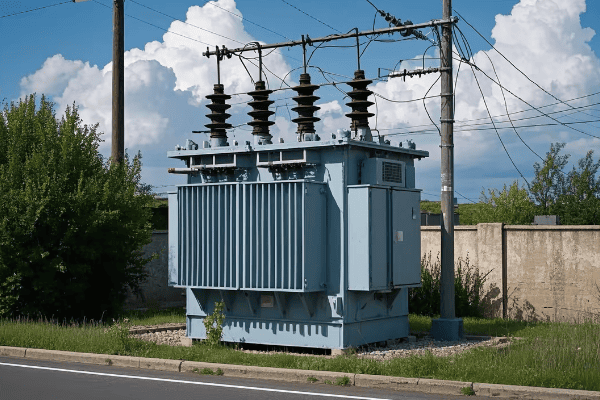
Let’s explore how transformers manage voltage in our power systems:
On-Load Tap Changers (OLTC)
One of the key tools for voltage control:
- OLTCs can adjust the turns ratio of a transformer while it’s energized.
- They can increase or decrease output voltage in small steps.
- This allows for real-time voltage adjustment in response to changing loads.
Voltage Regulation
Transformers help maintain consistent voltage levels:
- They compensate for voltage drops along transmission lines.
- This ensures that consumers receive power within the acceptable voltage range.
- Voltage regulation is crucial for the proper operation of electrical equipment.
Reactive Power Compensation
Some transformers help manage reactive power:
- Reactive power can cause voltage fluctuations.
- Certain transformer configurations can help absorb or supply reactive power.
- This contributes to overall voltage stability in the grid.
Coordination with Other Devices
Transformers work with other voltage control devices:
- They coordinate with capacitor banks and voltage regulators.
- This creates a comprehensive voltage management system across the grid.
Here’s a table showing how transformers contribute to voltage management at different levels:
| Grid Level | Transformer Type | Voltage Management Role |
|---|---|---|
| Transmission | Power Transformer | Bulk voltage adjustment, reactive power management |
| Sub-transmission | Sub-transmission Transformer | Voltage regulation between transmission and distribution |
| Distribution | Distribution Transformer | Fine-tuning voltage for end-users |
| Consumer | Pole-top/Pad-mounted Transformer | Final voltage adjustment for household use |
I once worked on a project to improve voltage stability in a rural area with a lot of distributed solar generation. The varying output from solar panels was causing voltage fluctuations. We installed new transformers with advanced OLTCs that could adjust voltage rapidly. The result was much more stable power quality, even on the sunniest or cloudiest days. It was a clear demonstration of how transformers can act as voltage control centers in modern, dynamic power grids.
Transformers are more than just voltage converters; they’re active participants in maintaining the health of our power grid. Their ability to manage and regulate voltage is crucial for ensuring that we have stable, reliable power at our fingertips. As our grid becomes more complex with the addition of renewable energy sources and smart grid technologies, the role of transformers in voltage management will only become more critical.
From Generation to Consumption: The Role of Different Transformer Types in Power Systems?
Have you ever wondered about the journey electricity takes from a power plant to your home? It’s a fascinating trip, and different types of transformers are the tour guides at every stop.
Different types of transformers play crucial roles at various stages of the power system. From step-up transformers at power plants to distribution transformers in neighborhoods, each type is designed for specific voltage levels and functions. Together, they ensure efficient power transmission and safe consumption.
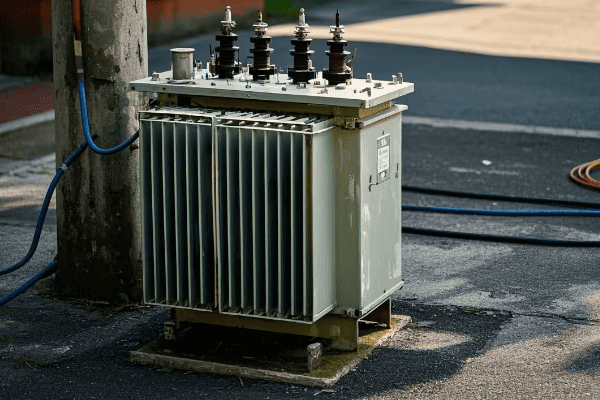
Let’s explore the main types of transformers and their roles in the power system:
1. Generator Step-Up Transformers
Located at power plants:
- Increase voltage from generator levels (15-25 kV) to transmission levels (230-765 kV).
- Enable efficient long-distance power transmission.
- Can be as large as a house and weigh hundreds of tons.
2. Transmission Transformers
Found at transmission substations:
- Adjust voltages between different transmission line levels.
- Help manage power flow in the transmission network.
- Often equipped with advanced cooling systems for high efficiency.
3. Sub-Transmission Transformers
Located at sub-transmission substations:
- Reduce voltage from transmission to sub-transmission levels (69-138 kV).
- Bridge the gap between transmission and distribution systems.
- Often have tap changers for voltage regulation.
4. Distribution Transformers
Found in neighborhoods:
- Reduce voltage from distribution levels to consumer voltage (120/240 V).
- Come in various types: pole-mounted, pad-mounted, underground.
- Designed to be reliable and low-maintenance.
5. Special-Purpose Transformers
Used for specific applications:
- Instrument Transformers: For measurement and protection.
- Phase-Shifting Transformers: Control power flow in transmission systems.
- Rectifier Transformers: Used in HVDC systems.
Here’s a comparison of these transformer types:
| Transformer Type | Location | Input Voltage | Output Voltage | Key Feature |
|---|---|---|---|---|
| Generator Step-Up | Power Plant | 15-25 kV | 230-765 kV | Very large capacity |
| Transmission | Transmission Substation | 230-765 kV | 115-345 kV | Advanced cooling |
| Sub-Transmission | Sub-Transmission Substation | 115-345 kV | 69-138 kV | Tap changers |
| Distribution | Neighborhood | 4-35 kV | 120/240 V | Compact design |
| Instrument | Throughout system | Varies | Low voltage | High accuracy |
I once worked on a project tracing the path of electricity from a hydroelectric dam to a small town. We encountered each of these transformer types along the way. The massive generator step-up transformer at the dam, the transmission transformers at substations, and finally the small distribution transformers in the town. Each played its part in delivering power efficiently and safely. It was like watching a well-choreographed dance, with each transformer perfectly suited to its role.
Understanding these different transformer types helps us appreciate the complexity of our power systems. Each type is optimized for its specific function, working together to ensure that electricity is delivered efficiently and safely from generation to consumption. As our power systems evolve with more renewable sources and smart grid technologies, these transformer types will continue to play crucial roles, adapting to meet new challenges in power distribution.
Minimizing Energy Loss: Transformers as Efficiency Guardians in Electricity Distribution?
Have you ever touched a warm phone charger? That warmth is wasted energy. Now imagine that on a massive scale – that’s the challenge transformers face in our power grid.
Transformers play a crucial role in minimizing energy losses in electricity distribution. They achieve this through efficient design, advanced materials, and strategic placement in the grid. By reducing losses, transformers help conserve energy, lower costs, and reduce the environmental impact of power distribution.
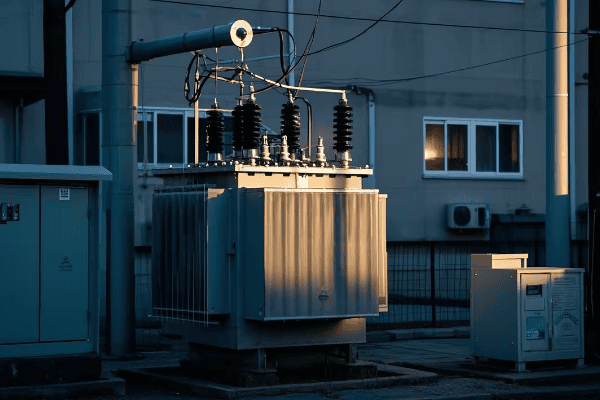
Let’s explore how transformers act as efficiency guardians:
Understanding Transformer Losses
Transformers experience two main types of losses:
-
No-Load Losses (Core Losses):
- Occur when the transformer is energized but not supplying load.
- Caused by the magnetization of the core.
- Present 24/7, even when no power is being transmitted.
-
Load Losses (Copper Losses):
- Occur when the transformer is supplying power.
- Increase with the square of the load current.
- Due to resistance in the transformer windings.
Strategies for Minimizing Losses
Transformer manufacturers and power system engineers use several strategies to minimize these losses:
-
Advanced Core Materials:
- Use of grain-oriented silicon steel or amorphous metal cores.
- These materials can reduce no-load losses by up to 70% compared to traditional materials.
-
Improved Winding Design:
- Use of larger conductor cross-sections to reduce resistance.
- Advanced winding geometries to minimize eddy currents.
-
Efficient Cooling Systems:
- Better cooling allows transformers to operate more efficiently.
- Use of vegetable-based oils with better cooling properties.
-
Optimal Sizing and Placement:
- Using the right size transformer for the load.
- Strategic placement to minimize transmission distances.
Here’s a comparison of efficiency improvements:
| Aspect | Traditional Design | Modern Efficient Design | Improvement |
|---|---|---|---|
| Core Loss | ~0.5% of rated power | ~0.1% of rated power | 80% reduction |
| Copper Loss | ~1% of rated power | ~0.5% of rated power | 50% reduction |
| Cooling System | Basic oil circulation | Advanced oil or ester fluids | 20-30% better heat dissipation |
I once worked on a project to upgrade the distribution transformers in a small city. We replaced old, inefficient units with modern, high-efficiency transformers. The results were striking. Overall energy losses in the distribution system dropped by 15%. This translated to significant cost savings for the utility and reduced carbon emissions. It was a powerful demonstration of how transformers can act as guardians of efficiency in our power systems.
Transformers play a vital role in minimizing energy losses in our power grids. Their efficiency directly impacts the overall efficiency of our power distribution systems. As we continue to seek ways to reduce our energy consumption and environmental impact, the role of efficient transformers becomes increasingly important. From the massive units at power plants to the small ones in our neighborhoods, each transformer contributes to the goal of delivering power with minimal waste. It’s a continuous process of innovation and improvement, driven by the need for more sustainable and efficient power systems.
Conclusion
Transformers are the key to efficient power transmission in electricity systems. They enable long-range power delivery, manage voltage, adapt to different system needs, and minimize energy losses. From generation to consumption, transformers ensure our power grid operates efficiently and reliably.
Free CHBEB Transformer Catalog Download
Get the full range of CHBEB transformers in one catalog.
Includes oil-immersed, dry-type, pad-mounted, and custom solutions.
Quick Message
Request A free quote
We'd like to work with you
- +86 15558785111
- [email protected]
- +86 15558785111
What We Do
CHINA BEI ER BIAN (CHBEB) GROUP, with 218 million in registered capital, originated from Beijing Beierbian Transformer Group. Headquartered in Beijing for R&D, it operates major production bases in Nanjing and Yueqing, producing high-quality products.
Latest Product
address
BeiJing
No 3,RongJing East Road,BeiJing Economic Technological Development Area,BeiJing,China
JiangSu
No 7️Xiangfeng Road,Jiangning,NanJing,JiangSu,China
WenZhou
No.211, Wei 16 Road, Industrial Zone, Yueqing, Wenzhou, Zhejiang, China.
XiangYang Industrial Zone ,YueQing,WenZhou,ZheJiang,China
contact us
- [email protected]
- +86 13057780111
- +86 13057780111
- +86 15558785111
Copyright © Bei Er Bian Group


